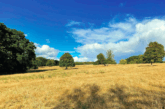
New regulations require evidence of a long-term biodiversity gain plan for each new site. Paul Brown, geospatial environmental data expert at Fera Science, shares best practice advice on where to start.
From last month, those applying for planning permission under the Town & Country Planning Act 1990 must submit a biodiversity gain plan with each application, detailing how 10% (minimum) biodiversity net gain (BNG) will be achieved and maintained for at least 30 years.
As best practice, it is recommended to follow the widely used ‘mitigation hierarchy’ framework to build a site-specific BNG plan.
The first stage of the hierarchy is avoidance. Developers should assess if a site development can be avoided altogether if it affects sensitive habitats, or whether alternative land can be used.
Next is minimisation. If no other options are available, actions to minimise biodiversity impacts must be prioritised, then a plan how to support or enhance habitats through the next step, restoration, should be created. This stage involves incorporating habitat restoration or creation efforts into a site’s design.
With scientific support, an effective biodiversity restoration strategy can help ensure at least 10% net gain is achieved for a minimum of 30 years. A lost section of habitat can be replaced with one which delivers greater benefits to nature. For example, replacing grazing grassland with mixed woodland to provide protection for more species of plants and animals to thrive will give a much greater benefit to biodiversity levels.
Finally, offsetting is necessary when unavoidable impacts occur, requiring BNG projects on-site or off-site to achieve 10% uplift. Offsetting off-site can be complex. These gains should support wider conservation strategies, locally and nationally, in addition to each individual site’s BNG aims.
Off-site BNG delivery also requires sourcing, financing, and managing by a third party, which can be costly.
However, options are out there, including habitat banks that make sourcing off-site units much quicker.
If it is not possible cannot source off-site biodiversity units privately, they can be bought from the government’s statutory biodiversity credits scheme as a last resort. These BNG credits are deliberately priced uncompetitively to encourage investment in new habitat creation projects.
 Science-based evidence
Science-based evidence
To achieve the best outcome from planning applications, decisions will need to justified with science-based evidence that shows the forecasted outcomes of each site’s BNG plan.
Gaining support from expert ecologists can help developers create a site-specific BNG plan more efficiently and effectively. Using science-based technology to capture and analyse environmental data in detail, ecologists can help developers build a current biodiversity baseline, then assess options for impact minimisation, biodiversity restoration and offsetting strategies.
Building a BNG plan on robust science and data will help it stand up to scrutiny from planning authorities.
Ecologists can help use the biodiversity baseline to forecast outcomes of proposed BNG projects, proving how the 10% threshold will be met and maintained for the required 30 years, minimum.
This information helps validate a BNG plan, evidencing how a developer has tailored their impact mitigation and biodiversity gain strategies to local ecological factors, to deliver a positive and traceable result for the environment. Demonstrating careful consideration, with the support of an expert ecologist, will definitely work in developers’ favour when sourcing planning permission.









